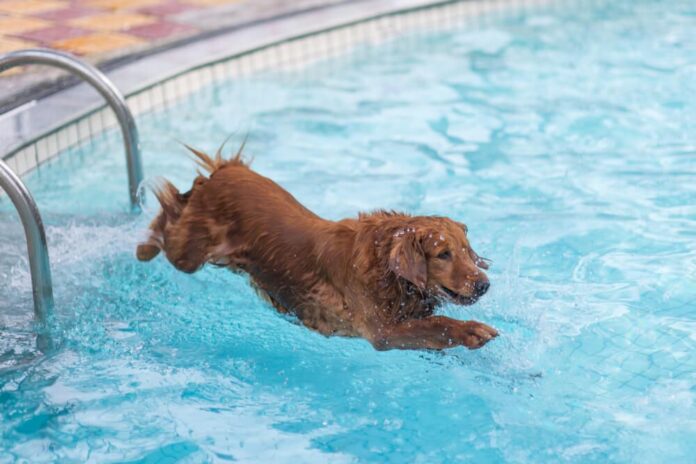
Dogs are considered man’s best friend, and for many owners, their furry friends are a part of the family.
They love to swim, especially in the hot summer months when it’s a great way to cool off. However, swimming can be dangerous for dogs if owners are not careful. It is essential for owners to know the risks and how to keep their pets safe when swimming.
Use a Dog Life Jacket

Even if your dog is an experienced swimmer, it is always a good idea to use a dog life jacket. Life jackets provide extra buoyancy, making it easier for dogs to stay afloat and swim for longer periods. Additionally, life jackets can be helpful in case of an emergency, as they can make it easier to retrieve the pet from the water.
When choosing a life jacket, make sure it fits your dog snugly but is not too tight. A poorly fitted life jacket can cause chafing or restrict the dog’s movements, making it harder for them to swim.
Check for Potential Health Concerns
Before allowing your pet to swim, it is crucial to ensure that they are healthy and fit enough for the activity. Some breeds are not built for swimming, and some dogs may have underlying health issues that could make swimming dangerous. For example, animals with hip dysplasia, arthritis, or heart problems may not be good candidates for swimming.
Additionally, if the pet has a history of seizures or has suffered from heat stroke in the past, it may not be safe for them to swim. Always consult with your veterinarian to ensure your dog is healthy enough to swim.
Choose the Right Location

Not all bodies of water are safe for dogs to swim in. Before taking your furry friend to a new location, it is important to research the area and ensure it is safe for swimming. Avoid swimming in stagnant water, as it may contain harmful bacteria and parasites that could make the dog sick.
Swimming in public pools or lakes may also pose a risk to your pet. Some areas may have rules against dogs swimming in certain bodies of water, so it’s essential to check local regulations before heading out.
Supervise Your Dog
Never leave the dog unattended while they are swimming. They can tire easily, and if they become tired or overwhelmed, they may struggle to stay afloat. It is essential to keep a close eye on your pet and be ready to intervene if they show signs of distress.
If the pet is swimming in a pool, make sure they know how to get out of the water safely. Teach the dog how to use the pool steps or ladder to exit the water, and supervise them closely to ensure they do not become trapped under pool covers or other obstacles.
Start Slowly

If your dog is new to swimming or is not a confident swimmer, it’s important to start slowly. Start in shallow water and let your pet get used to the sensation of being in the water. Use positive reinforcement to encourage the pet to swim and never force them into the water.
Over time, gradually move to deeper water, but always stay within your dog’s comfort zone. Remember that every animal is different and may have different abilities when it comes to swimming.
Rinse Your Dog After Swimming
After your pet has finished swimming, it is important to rinse them thoroughly with clean water. Saltwater and chlorine can be irritating to your dog’s skin, eyes, and ears. Rinsing can help prevent skin irritation and reduce the risk of ear infections.
Teaching Your Canine Companion to Swim

While some dogs are natural swimmers, others may need some training before they feel comfortable in the water. If your pet is hesitant to swim, start by teaching them to enjoy the water. This can be done by using a kiddie pool or shallow water and encouraging the dog to play in the water.
Once your pet is comfortable in the water, you can begin teaching them to swim. Use positive reinforcement to encourage the dog to swim and reward them with treats or praise when they do well.
Teaching your pet to swim can be a fun bonding experience for both you and your furry friend.
Be Prepared for Emergencies

Even with proper precautions, accidents can still happen. It is important to be prepared for emergencies when swimming with your dog. Always bring a first aid kit and a leash with you when swimming with your pet. If you are a responsible person then having a dog is the right decision for you.
Responsibility
If the animal is struggling in the water, resist the urge to jump in after them. This could put both you and your pet in danger. Instead, try to reach him with a long object, such as a branch or a pool noodle, and guide them back to shore.
If your pet becomes unconscious, begin performing CPR immediately and call for emergency veterinary care.



